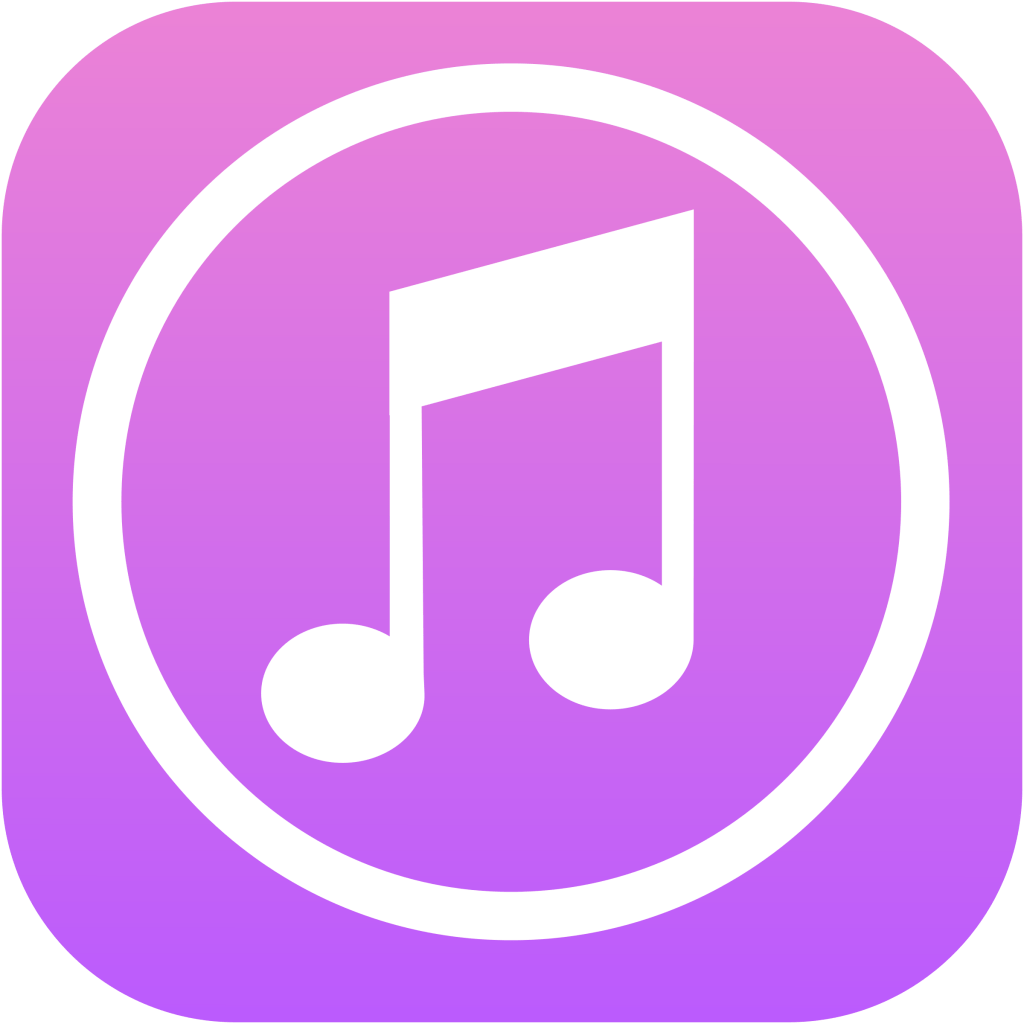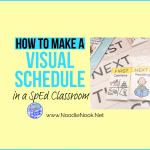Daily Visual Schedule in Special Education Classrooms
If you’ve heard the students in your self-contained classroom need a daily visual schedule, especially for students with Autism, then you are right.
Having a visual schedule is essential and, quite frankly, a non-negotiable for every special ed classroom. You need a daily visual schedule… but what kind do you need?
Read more about what daily visual schedules you need in your Autism Unit or Special Ed classroom, how they offer behavior support, help the adults in the room, and support individual students with life skills.
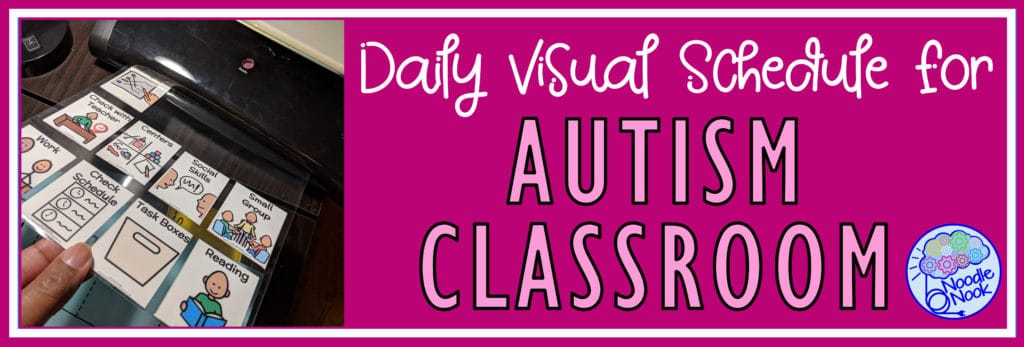
What Kind of Daily Visual Schedules Are There?
When people say you need a daily visual schedule for students, it can feel super overwhelming. And, truth be told, different students benefit from different types of schedules. Here are a few to get your mental juices flowing.
Whole Day Schedule (Macro-Schedule)
This is a schedule that tells the times and events for the entire day. Most teachers post a bell schedule in their classrooms to keep themselves and their support staff on track.
Students benefit from this too. Knowing where we are in the day, how much of our day is left, and when the stuff we like is scheduled works for everyone. To make it more “visual” add a clock, an icon to indicate the different events or even a color that can be associated with each event. Anything to support a student who is a non-reader.
Class Period Schedule (Micro-Schedule)
Not everyone can embrace the whole day’s schedule in one go. Breaking the entire day down into smaller segments is helpful for students (and adults) who struggle with such a long amount of time. Class periods are perfect or that.
Write down the daily activities schedule within a class period. You can write that on the board, on a piece of paper, or even on a post-it on a specific student’s desk. What matters is that a student has some idea of what you want them to do during class.
First-Then Schedule
Macro and Micro daily visual schedules can all be too much for some students. Occasionally all a student can digest is what I am supposed to do right now and what I’m gonna do next. That is where a first-then is super helpful.
In addition, a first-then works really well as behavior support. You have so much flexibility as to what is now and what is next, you can adjust your asks based on what the student needs to support good behavior. Maybe a student FIRST answers 2 questions, THEN gets a pretzel. Maybe FIRST is 10 questions, THEN is 2 minutes of music. You have all the control with this one, which is why it is so effective.
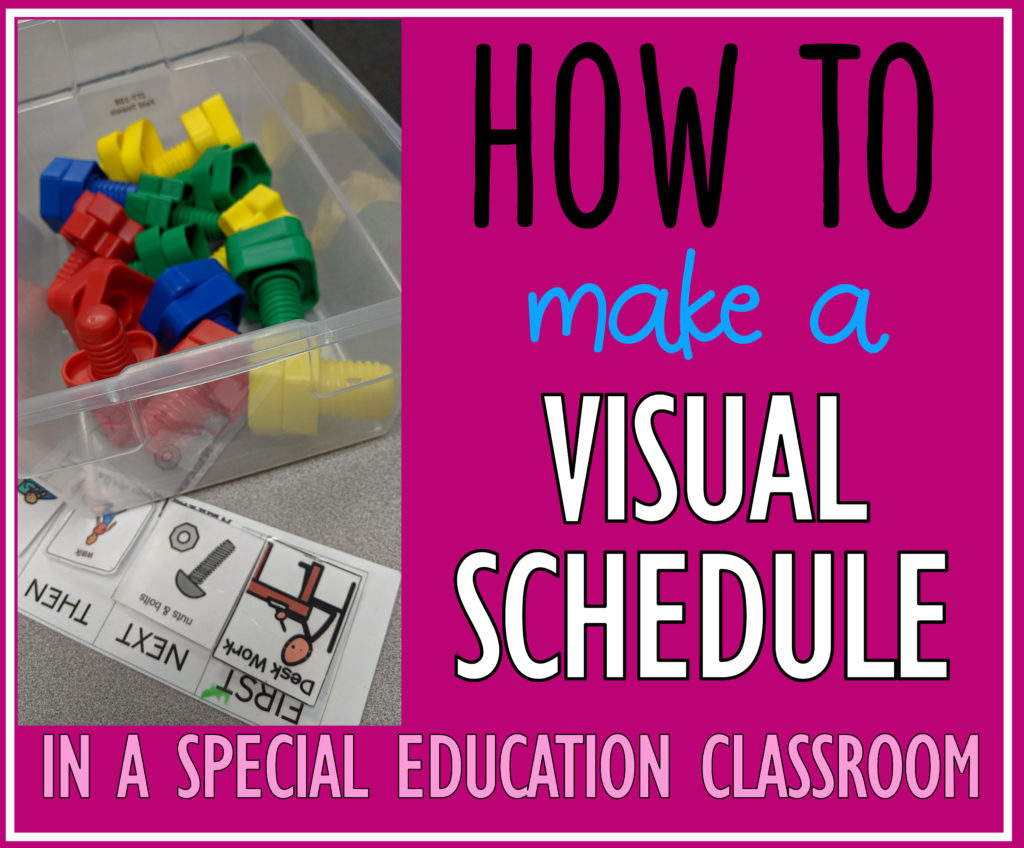
Who Benefits from a Visual Schedule
Adults: When administrators come into a self-contained room, sometimes they have no idea what they are looking at or what to look for. They really benefit from seeing a posted daily schedule.
As a general fact, most adults benefit from seeing the day’s events laid out to see. That is why calendar apps, planners, and Alexa reminders sell so well. We love them! And your support staff will greatly appreciate knowing the daily events, classroom activities, and ability to control a specific student’s pace with a first-then.
Students: Our students are really no different than we are. They benefit from a daily visual schedule just as much as we do and for all the reasons listed above.
In addition, learning to follow a schedule is a great life skill to learn for most students. As a child develops a better understanding of their daily schedule, start to have them keep a personal calendar. Adding important dates and keeping tabs of events as they come is great for executive functioning too.
You as the Teacher: Believe me, it is so easy to feel like you are running at 100,000% every day- and doing this one thing will make that feel like less. Promise. It just lessens the number of times you have to answer “What are we doing right now?” and “When is lunch?”.
We teachers also put a lot of time into lesson planning and laying out activities. Putting those masterful plans up on the board or on a visual schedule will help you keep pace with your intentions. It really does make your life easier too.
How Do I Get Started with a Visual Schedule
You can start with a pre-purchased printable product, and we have one in the Noodle Nook store and on TpT. But if you are just trying to get started today… here is where you should start.
Materials:
Step 1: Write your daily schedule on your dry-erase board with the times and the content area. Refer to the times as you transition throughout your day. If you are feeling artistic, sketch a symbol (like a book or a math sign).
Step 2: Cut out a big ol’ arrow on colored paper. Nothing fancy. If you are not feeling that big old arrow, draw an arrow on a post-it.
Again, this doesn’t have to be Pinterest-perfect, it just has to work. As you transition throughout your day, move the arrow down. If you are feeling like a super-teacher, say something like “math is all finished, it’s time for reading and next up is lunch” when you move that post-it
Step 3: On a colored piece of paper, write the three or four things that you plan on doing in a given class period. Put it up on the board with some magnets. Refer to it when possible. “Today in Reading, we are going to play a phonics game, make rhyming words on the whiteboard, finish our worksheets and work in centers”.
Step 4: On one post-it, write “first” on the top. On another, write “then”. Put these two post-its at a specific student’s table to tell them what they need to do first and then what happens next. When something is ‘finished’, throw the “first” post-it away, make the ‘then’ the ‘first’, and then make a new “then”.
Step 5: About 1-3 minutes before a transition, let students know a change is coming. Say “reading is almost over in about 2 minutes. Before we finish up, please clean up your area. Next up is math.
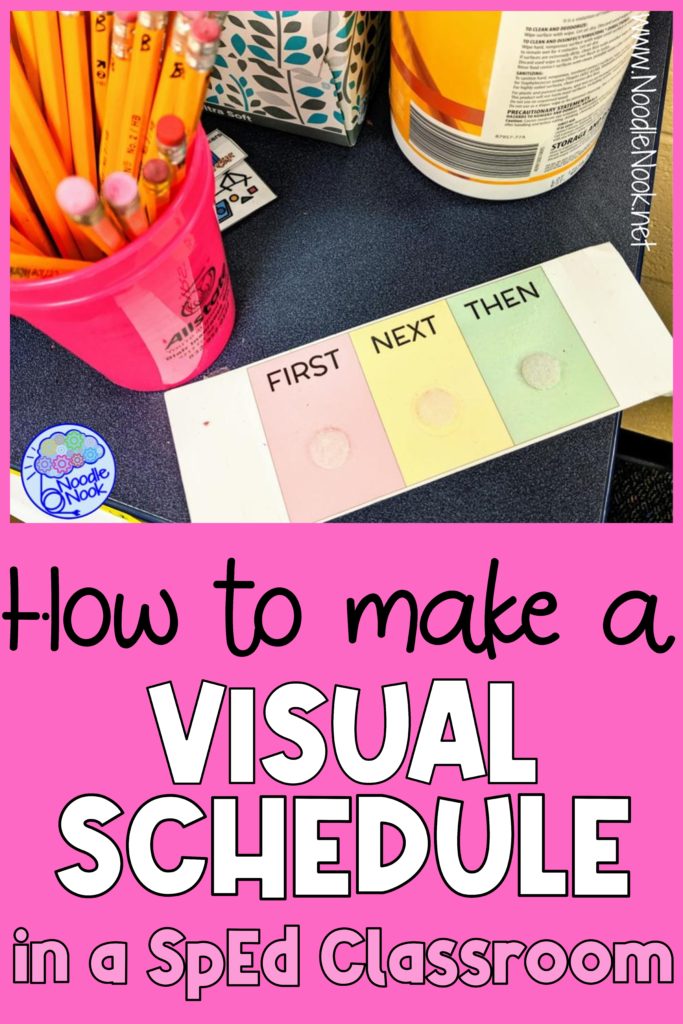
Daily Visual Schedule in an Autism Classroom
Taking these simple steps is a great way of getting a visual schedule started in your special ed classroom. The benefit of better behavior, less anxiety (for students and adults), and smoother transitions will be evident as soon as you implement this consistently.
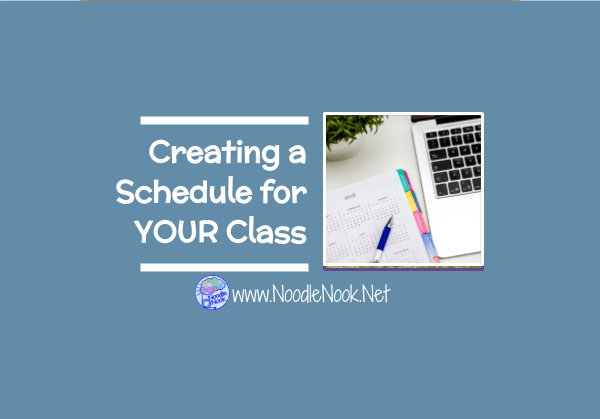
If you are looking for a pre-prepped printable that is pretty Pinterest-worthy, then check out the Visual Schedule from Noodle Nook available on this site and on TeachersPayTeachers too. It takes a little of the work out of the process but still gets you all the benefits… Win-Win!
Sharing is Caring…
Tips, tricks, resources, and FREE tools for teachers in Special Ed and Autism Units. Listen, read and watch to learn how to be more successful at Noodle Nook. And be sure to subscribe to the monthly newsletter TODAY!







